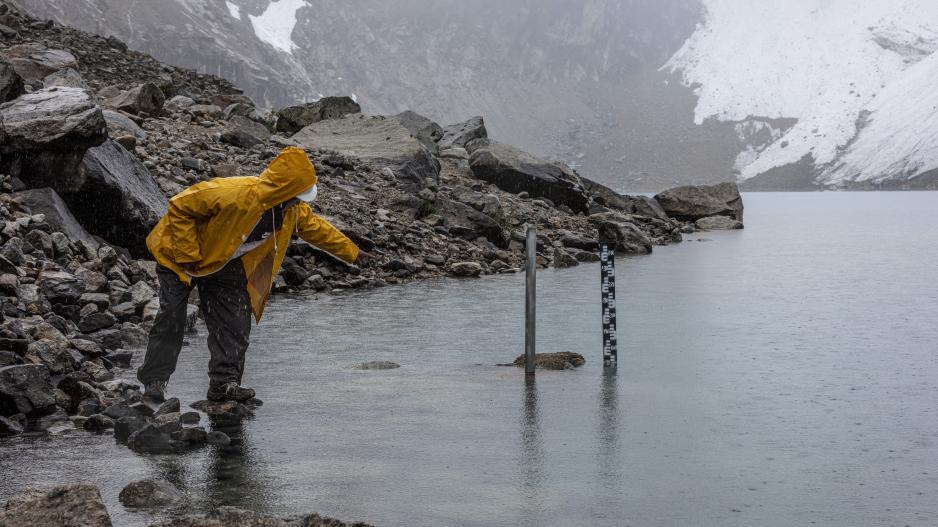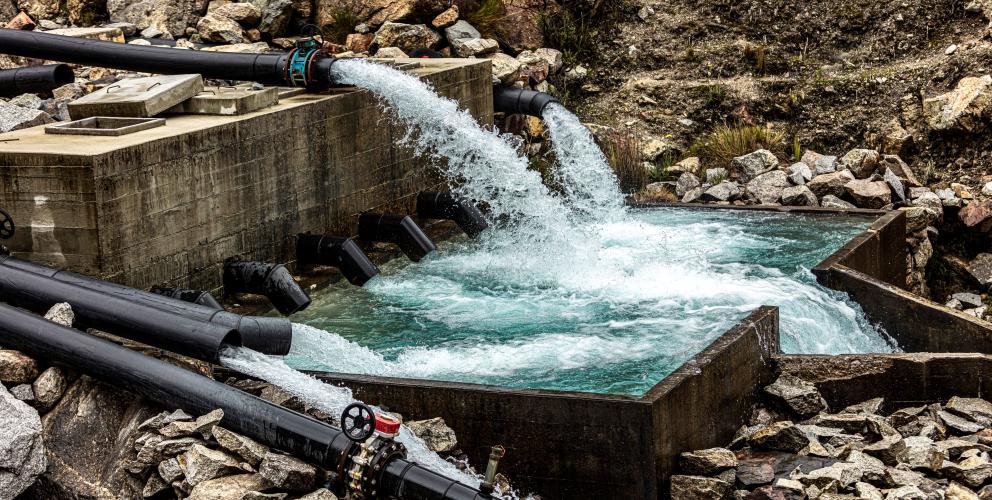Melting glaciers in the Andes: The problem of water supply
The effects of climate change are being felt ever more clearly in the Peruvian Andes. Not only does the acute risk of flooding due to the advancing glacier melt pose an enormous risk for the people in Huaraz, but the water supply is also at risk.
Water shortage in the communities
In addition to the risk of flooding, another problem is often neglected in discussions about the effects of the climate crisis: water scarcity. The Andes are particularly hard hit by the climate crisis: Between 1970 and 2010, the Peruvian glacier area was reduced by around 43%. The glaciers are important water reservoirs and serve as a long-term source of water supply for the communities, which is used for irrigation in agriculture, among other things. The dramatic glacier retreat therefore has two significant consequences:
1. the risk of glacial tidal surges is increasing. As glaciers melt, new lakes form and existing lakes become larger. The combination of growing water masses and parts of glaciers breaking off leads to considerable dangers.
2 Glaciers are a major source of water supply in the region. As the glaciers recede, the flow of water into the rivers also decreases. The water supply to villages and towns is at risk.

A glacier lake guard measures the water level of the lagoon
As a farmer, plaintiff Saúl is also affected by the lack of water. He and his family live from the fields around his house and the irregular rainfall makes farming very difficult. He says: "I'm worried because climate change means we can no longer rely on the rainy season to irrigate our fields as we used to".
Consequences of the climate crisis in the Cordillera Blanca
We spoke to Inés Yanac, head of the local NGO Wayintsik, with whom we work on site. Inés says: "The people in the Cordillera Blanca are increasingly exposed to the consequences of climate change: Drought, low water availability in the dry season, torrential rainfall, increased temperatures and more frequent frosts and hailstorms."
Wayintsik works in local communities to develop new methods for agriculture. At the same time, however, the aim is also to bring back tried and tested technologies. Major emitters such as RWE, whose business models are destroying the livelihoods of people all over the world, are responsible for the circumstances.
Flood wave strains the dam
In addition to the long-term problem of water shortages, the city of Huaraz is threatened by a constant risk of tidal waves. A worrying example occurred in January when a snow avalanche crashed into Laguna Palcacocha, causing waves 2-3 meters high. Fortunately, the dam, which is designed to withstand waves up to seven meters high, withstood the masses of water, although parts of the pumping system were damaged. This incident once again shows the acute danger to which the people of Huaraz are exposed.
More information about the lawsuit and the situation on the ground can be found in our newsletter.
